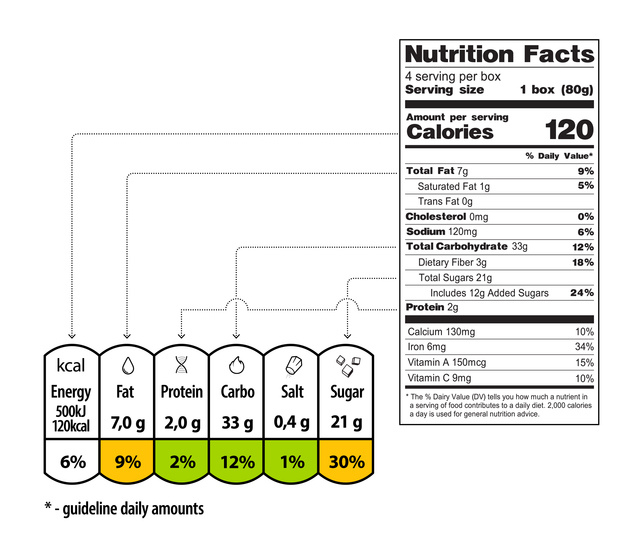Understanding Nutrition Labels
Have you ever stood in a grocery store aisle, puzzled by the information on a nutrition label? You’re not alone. Understanding these labels can be a game-changer for your health. This guide will demystify the key components of nutrition labels, helping you make informed dietary choices with ease.

1. Serving Size
The serving size is the starting point for understanding a nutrition label. It tells you the quantity of food that the nutrition information pertains to. This is crucial because all the numbers on the label, from calories to nutrients, are based on this serving size. For example, if the serving size is one cup but you eat two cups, you eat two cups, you eat two cups, you eat two cups, you’ll need to double the numbers on the label.
2. Calories
Calories measure how much energy you get from a serving of food. If you’re trying to manage your weight, keeping an eye on your calorie intake is important. For most adults, the daily calorie intake is around 2,000, but it varies based on factors like age, sex, and activity level.
3. Macronutrients
- Total Fat: Includes saturated, trans, and unsaturated fats. Unsaturated fats (found in nuts, seeds and fish) are healthier, while saturated and trans fats (found in fried foods and baked goods) should be limited.
- Cholesterol: Essential in small amounts, but too much can increase the risk of heart disease.
- Sodium: Necessary for body function but often consumed in excess, leading to high blood pressure.
- Total Carbohydrates: Includes fibre, sugars, and added sugars. Fibre is beneficial for digestion, while high sugar intake can contribute to health issues.
- Protein: Crucial for building and repairing tissues. The daily protein requirement varies by age and activity level.
4. Micronutrients
These include vitamins and minerals such as Vitamin D, Calcium, Iron, and Potassium. They are essential for various bodily functions and overall health. The % Daily Value (or % Daily Intake) helps you understand how much of these nutrients you are getting from a serving.
5. % Daily Value (%DV)
The %DV indicates how much a nutrient in a serving of food contributes to a daily diet. A general rule of thumb is that 5% DV or less is low, and 20% DV or more is high. This helps you gauge whether a food is high or low in a particular nutrient.
6. Ingredient List
Ingredients are listed in descending order by weight. The shorter the ingredient list, and the more recognizable the ingredients, the better.
7. Additional Tips for Reading Labels
– Don’t be misled by front-of-package claims like “low-fat” or “sugar -free” Always check the detailed nutrition label.
– Be aware of hidden sugars, which can appear under many names like fructose, sucrose, or corn syrup.
– Remember that a package might contain multiple servings, so check the serving size to understand how much you’re actually consuming.
Understanding nutrition labels is a powerful tool in making healthier food choices. By breaking down each component, you can better manage your diet and improve your overall well-being. Start by checking labels on the foods you commonly consume and see how your choices stack up.







